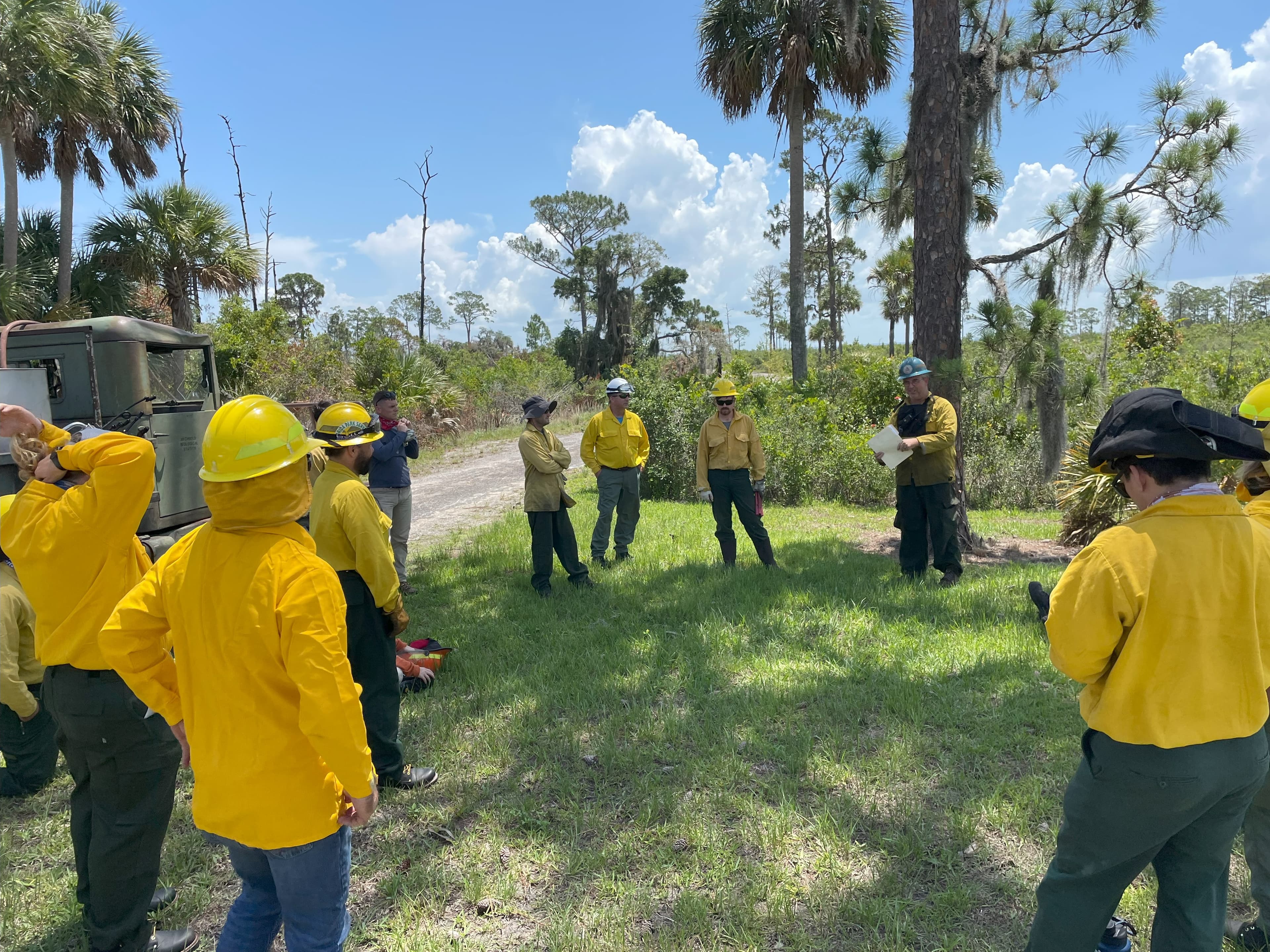 Photo by: Kevin Main
Photo by: Kevin MainWhy Prescribed Burns are Important and what we do to Conduct a Burn
Author: Kevin Main
At Archbold Biological Station, prescribed burning is a way of life. Fire management affects much of the research conducted on rare plants and animals at Archbold. "These species need fire to survive," says Kevin Main, land manager and ‘burn boss’ at Archbold. "It's ironic to think of fire bringing life, but that's what happens. See this open scrub?" Kevin pointed to an area of open scrub vegetation at Archbold, "it needs fire to keep it open. If we do not burn, the vegetation grows taller and more dense and species such as the Florida Scrub-Jay and Gopher Tortoise abandon these areas. Rare plant populations respond to the lack of fire too, often declining and sometimes disappearing from long-unburned areas."
Main continued, "These species respond positively to fire because they have evolved with fire. Before human settlement of Florida, fires lit by lightning could burn for days or weeks into huge mosaics of burned and unburned lands. Some areas burned almost every year while other areas, like scrub, burned a little less frequently. However, with settlement came the desire to stop fires. All fires were seen as bad and were put out as soon as possible. This has led to the high fuels and wildfire problems we have today. It has also led to a decline in the species that need fire."
Since 1977, Archbold has implemented a prescribed fire program to restore near-natural fire regimes and provide a template for studying the ecology of natural and altered fire regimes. Main said, "Since fire is vital to many scrub species and since we can no longer rely on lightning fires we use prescribed fires to maintain the property. Fires are conducted under a strict set of guidelines that assures safety of the operation while meeting the goals of the program."
In 1997 a comprehensive fire plan was put into place. "The Fire Management Plan," said Main, "sets goals for the fire program and provides guidance for how often each burn unit is burned. We burn about 10-20 days each year, burning about 500-1500 acres per year. Planning for burns requires much more than just knowing which units are due for burns. We also need to prep units for burning. We often disk the roads around units so we have a fire break with no vegetation. Sometimes we mow unit edges to reduce the fire intensity along the boundary. We also have to look at seasonal weather forecasts, and keep track of the time since rain."
"We develop a ‘prescription’ for each burn unit, which includes things such as a description of the unit, the date of the last fire, the weather conditions that are necessary to burn the unit, the number of crew and equipment needed, and a map of the area. The Florida Statutes dictate what must be included in a burn prescription. On the morning of a burn we contact the Florida Forest Service to get a burn authorization. They will then review the conditions and determine if an authorization will be issued."
One of the conditions that Forestry looks at is whether or not the person seeking authorization is a Florida Certified Burner. All the burns conducted at Archbold are performed under the direction of a certified burner. "Certified burners," said Main, "have taken extra training and are required to perform multiple burns and attend training events. Certified burners are allowed to burn under broader conditions because of their training and experience. Florida takes fire very seriously, and Florida's prescribed fire laws are there to protect public values while allowing fire to continue to be used.

"Once we have authorization from Forestry, the fire crew will gather together for a morning briefing. We will discuss the unit, the goals, safety concerns, how the fire will be lit, who is on holding and lighting crews, who will be using what equipment and more. We will then do the burn, usually starting around 10am and finishing by late afternoon. After the fire is out, time is spent putting out anything smoldering along the unit edges. After this, the burn crew meets for a post-fire review before being dismissed. The burned area is then checked for the next several days to make sure there are no flair-ups or other concerns.
"It's a hot job, especially when we burn in the summer, but I can't think of anything I'd rather do," said Main, "I have a responsibility to care for this property and the plants and animals that call it home. They need fire. I've got a lighter. Let's do this."